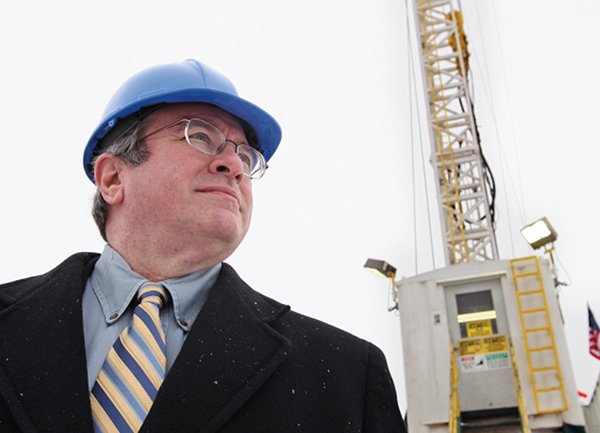 Last year, the Oregon Institute of Technology became the first university in the nation to award degrees in renewable energy engineering. Now the Klamath Falls-based school is on its way to becoming the world’s first geothermal-powered campus, with a 1.5-megawatt geothermal power plant due to be completed by the spring of 2010.
Last year, the Oregon Institute of Technology became the first university in the nation to award degrees in renewable energy engineering. Now the Klamath Falls-based school is on its way to becoming the world’s first geothermal-powered campus, with a 1.5-megawatt geothermal power plant due to be completed by the spring of 2010.
Photo by Jamie Lusch |
Last year, the Oregon Institute of Technology became the first university in the nation to award degrees in renewable energy engineering. Now the Klamath Falls-based school is on its way to becoming the world’s first geothermal-powered campus, with a 1.5-megawatt geothermal power plant due to be completed by the spring of 2010.
The often overlooked polytechnic institution has eight campuses spread throughout Oregon and Washington, collaborations with Boeing, OHSU and ODS, and perhaps most importantly in these job-scarce times, a 98% placement rate, with average starting salaries for graduates hovering around $50,000.
Chris Maples, a paleontologist by training, took over as OIT president last October.
Are you seeing an increase in admissions in this economy?
We are. The majors that we have in the allied health sciences and engineering areas are about as recession resistant a group as one can find.
Have you had to adjust scholarships or financial aid given the loss of education funds in most families?
There also has been a corresponding loss of scholarship money in every foundation in the nation. So we are trying to adjust the best we can to meet the influx of new students and the declining budgets. We are pretty smart about how we hire faculty.
We hire a number of adjunct faculty who bring wonderful expertise into the system and get paid virtually nothing to do it. I recently had an adjunct faculty member tell me that he works at his company to support his teaching habit and there’s a lot of truth in that. We couldn’t function without them. These are people with real-world experience and knowledge to impart to our students. It’s not just theoretical, it’s not dated information, it’s the real thing.
We have Boeing people, we have Intel people; we have all sorts of people from all types of sectors. And some of our areas are growing like mad, even in a time of declining budgets, like our renewable energy engineering program.
Weren’t you the first in the nation to offer that degree?
We were. And we’ve gone from three or four students choosing that major to 118 in the program’s first four years.
And now you’re launching your own renewable energy experiment.
We’re already starting the drilling process, to go very deep to tap into hot water several thousand feet down underground. The goal is to put enough of a power plant on site that it will generate not only our needs but the needs of Sky Lakes Medical Center across the way, and to make the excess power available to any green development that might be occurring around our campus in Klamath Falls. It could make a great green business power opportunity.
It’s really a nice deal, and there are a number of companies that would really like to set up somewhere where there is green power for them to work from because that would match the overall company philosophy. Between that project and our new renewable energy engineering graduates coming out with their specific expertise, we think this could really take off and go.


